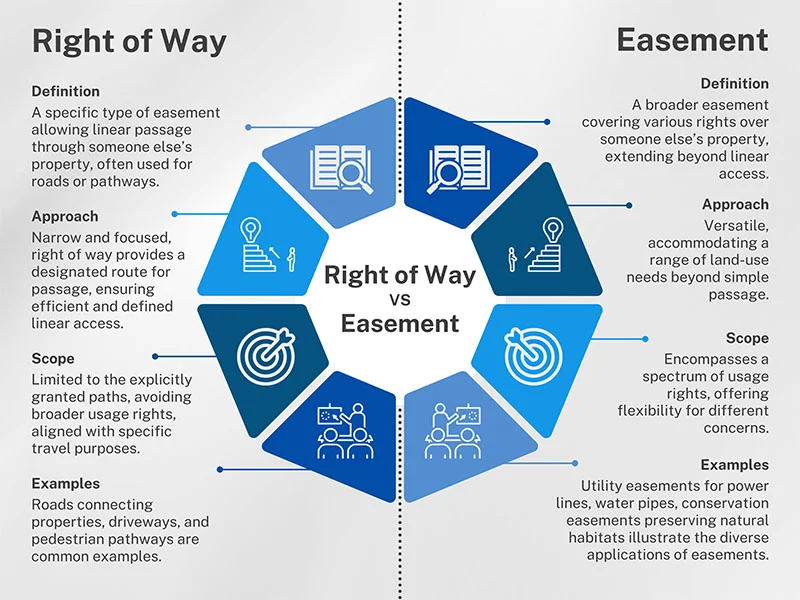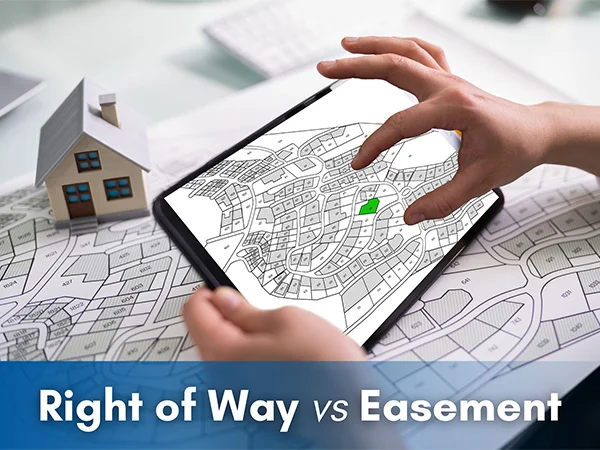Understanding the nuances of property access is crucial in real estate transactions, with terms like “right of way” and “easement” frequently used but often misunderstood. In this detailed exploration, we aim to shed light on the distinct characteristics that set right of way and easement apart, ensuring clarity for property owners, buyers, and developers.
Defining Right of Way:
A right of way, a specific form of easement, grants individuals or entities the legal right for linear passage through another person’s property. Right of way can be dedicated for various purposes, such as pedestrian access, driveway use, or utility installation. It’s crucial to note that the party with the right of way doesn’t own the land; they simply have the right to use it for a particular purpose.
Understanding Easement:
An easement, on the other hand, is a legal right that allows someone to use another person’s land for a specific purpose. Unlike right of way, easements can involve a broader range of activities, including but not limited to access, parking, or even the installation and maintenance of utilities. Easements can be affirmative, granting the right to do something, or negative, preventing the property owner from doing something that would otherwise be allowed. They can be created by express agreement, implication, or necessity.
Explore the versatility of easements and their legal considerations here.
Key Differences:

- Scope of Use:
- Right of way is typically more specific, allowing passage or access through a designated path.
- Easements can be more versatile, covering a range of activities beyond just passage.
- Ownership of Land:
- Right of way doesn’t transfer ownership; it only grants the right to use a specific area.
- Easements also don’t transfer ownership but provide rights to use the land for specific purposes.
- Creation and Termination:
- Right of way may be established by an express grant, dedication, or prescription. It can also cease to exist if the conditions are no longer met.
- Easements can be created by express agreement, implication, or necessity and may also be terminated under certain circumstances.
In navigating the complexities of property law, understanding the distinctions between right of way and easement is crucial. While both involve granting permission to use someone else’s land, their specific purposes, scopes, and implications differ. Property Owners, as well as those granted these rights, should be aware of these differences to ensure a harmonious and legally sound coexistence.

